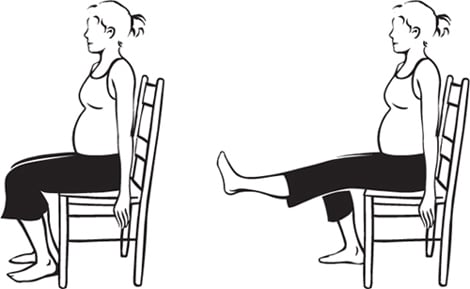How Is the Baby Lying?
You may be wondering how your baby is
lying inside the uterus. Is the baby head first? Is it bottom first
(breech)? Is the baby lying sideways? It’s difficult—usually
impossible—at this point in pregnancy to tell just by feeling your
abdomen. The baby changes position throughout pregnancy.
Is Home Birth Safe?
Home births happen. Of the 25,000 home
births that occur every year in the United States, 25% (a little over
6,000) of them are unplanned. That means the other 75% (nearly 19,000)
of home births are planned. But are home births safe?
You may have heard from friends or
acquaintances they had a home birth and everything went fine. Some
women want to give birth at home because they feel it’s “more natural.”
Another factor may be the high cost of labor and delivery, especially
if you don’t have full insurance coverage.
But research has shown giving birth at
home is an extremely risky undertaking. One study showed twice as many
infant deaths and serious, dangerous complications when babies are
delivered at home. What can be done at home if your baby has serious
problems and needs immediate medical care that can only be provided at
a hospital or birthing center staffed by professionals?
We know there are also dangers to mom.
First-time pregnant women who deliver at home have nearly triple the
risk of complications after baby’s birth. In addition, the chance of
serious problems increases when a woman suffers from various pregnancy
problems. Even carrying more than one baby increases your risk.
The American College of Obstetricians
and Gynecologists has firmly stated that home birthing is hazardous to
a woman and her baby. Based on Dr. Curtis’s own experiences with the
aftermath of home births, we must concur. We advise any woman who is
considering this option to talk to her healthcare provider about the
safety and wisdom of delivering her baby at the hospital or a birthing
center.
Dad Tip
Your partner has been feeling the baby
move for a while. Around this time, you may also be able to feel it!
Gently place your hand on her abdomen, and leave it there for a while.
Your partner can tell you when the baby is moving.
You can feel the abdomen to try
to see where the head or other parts are located. In another 3 to 4
weeks, the baby’s head will be harder; it will be easier at that time
for your healthcare provider to determine how the baby is lying (called
presentation of the fetus).
Bug Sprays and Insect Repellents
If you’re pregnant and live in an area
where bugs are a problem, take precautions to avoid bites to reduce
your risk for infections. Avoid insect-infested areas, use screens on
windows and doors, and wear protective clothing. Get rid of standing
water in your yard so mosquitoes and other insects don’t have a place
to breed.
Grandma’s Remedy
If you want to avoid using medication,
try a folk remedy. If you get a sunburn, brew up some mint tea, and
cool it. Wet a small towel in the tea, and apply it to your sunburned
skin. It cools the burn and may prevent peeling.
You may be wondering if it’s safe to use
mosquito and other bug repellents. It’s OK to use an EPA-registered
repellent (one that has been reviewed for safety by the U.S.
Environmental Protection Agency). The CDC recommends repellents
containing DEET or picaridin on skin and clothing, and per-methrin on
clothing. Oil of lemon eucalyptus is another option, but it’s not as
long-lasting.
Don’t overdo it with bug sprays. Spray
your clothing, not your skin. Bug lights and bug candles may offer some
protection. Even some plants, such as citronella plants, may help repel
insects.
Canavan Disease
Canavan disease, also called Canavan sclerosis and Canavan-van Bogaert-Bertrand syndrome,
is a relatively common degenerative disease of the brain. Although
Canavan disease may occur in any ethnic group, it’s more frequent among
Saudi Arabians and Ashkenazi Jews from eastern Poland, Lithuania and
western Russia.
The disease is one of a group of genetic disorders called leukodystrophies.
With Canavan disease, the white matter of the brain degenerates into
spongy tissue riddled with small fluid-filled spaces. The disease
causes problems in the development of the myelin sheath, the fatty
covering that acts as an insulator around nerve fibers in the brain.
There is no cure,
nor is there a standard course of treatment. The disease develops in
infancy, and prognosis is poor. Death usually occurs before age 4,
although some children have survived to their 20s.
Canavan disease can be
identified by a blood test that screens for the missing enzyme or for
mutations in the gene that controls aspartoacylase. Both parents must
be carriers of the defective gene to have an affected child. When both
parents are found to carry the Canavan gene mutation, there is a
one-in-four chance with each pregnancy that the child will be affected.
6. Exercise for Week 28
Sit tall in a straight-backed side
chair, with your knees bent, your arms relaxed at your side and your
feet flat on the floor. Lift your left foot off the floor, with your
leg extended. Hold for 8 seconds; be sure you are sitting erect. Lower
your left leg. Do 5 times for each leg. Stretches hamstrings, and strengthens thigh muscles.
